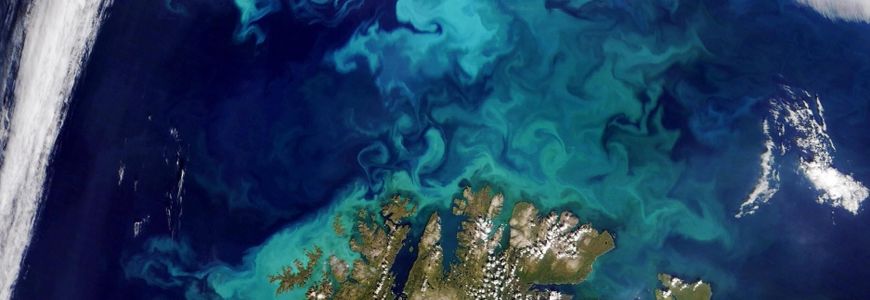How Plankton Blooms Absorb CO2
Contemporary Science Issues and Innovations
February 24, 2015 Belmont Media Center, Belmont MA
Amala Mahadevan, PhD, Senior Scientist, Department of Physical Oceanography, Woods Hole Oceanographic Institution. Dr. Mahadevan is a 2014-2015 Radcliffe Fellow.
background + video Scientists Discover New Trigger for North Atlantic Plankton Bloom

Plankton are microscopic organisms that represent the base of the ocean food chain. More important for us, plankton function as part of a biological pump. As atmospheric CO2 is absorbed by the ocean, the phytoplankton use the CO2 and sunlight to photosynthesize. In the process, they produce oxygen and help to remove about one-third of the atmospheric CO2. The CO2 is absorbed into the phytoplankton shells, and ultimately sinks to the bottom of the sea as the plankton die off. The planet's health depends on regular plankton "blooms," in which enormous aggregations of plankton spread for miles over the world's oceans. The NASA satellite image here is a fragment of a plankton bloom off the New Zealand coast. Scientists are trying to understand the complex physical, chemical and biological mechanisms that trigger the plankton blooms. Dr. Mahadevan and her colleagues recently discovered a critical trigger: ocean eddies provide the necessary turbulence to rotate the warm surface water to the depths where temperatures are colder. In this discussion, Dr. Mahadevan explains the role of the phytoplankton in the absorption of CO2 and how ocean eddies cause the necessary circulation of the phytoplankton from surface to deep ocean.

Article 3/26/15 (National Science Foundation) about the discovery by Dr. Mahadevan and her colleagues of the role of ocean eddies in the ocean's biological pump. Plankton Bloom Hitches Ride to Ocean's Depths on Eddies

